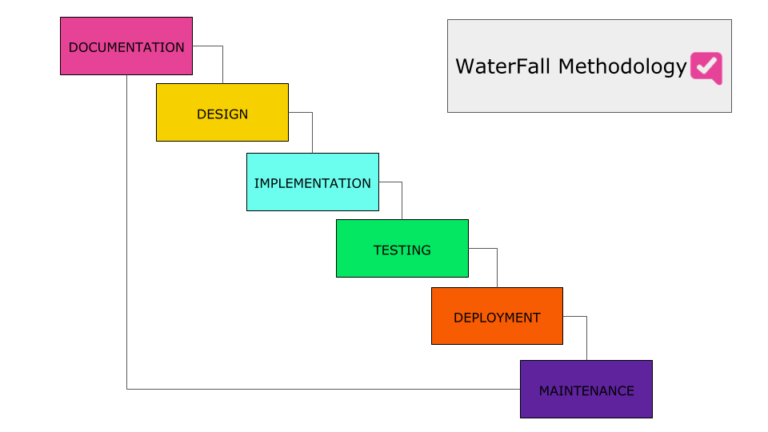
If a project is to meet deliverables, it must be carried out in the most effective way. Waterfall project management is one of the most straightforward ways to accomplish that. If you have been in project management for a while, then you must have come across the term. It’s one of the oldest approaches.
The system simplifies project management through a sequential process. If you don’t know what it entails, then this is an opportunity to learn some basics. Understanding how the waterfall methodology works will help you decide if it fits your project.
What is Waterfall Project Management?
This project management approach is linear with several phases. One stage must be complete before the next one can begin. It flows like a waterfall. The phases are distinct and terminal. When one finishes, you can’t return to it to make changes. If adjustments are necessary, you would have to redo the entire system. You also can’t skip one step and work on the next one.
The waterfall methodology was developed for industries where alterations in the midst of a project are too costly and time-consuming. Accredited to the computer scientist Winston W. Royce but he was not the inventor but known for writing a paper in 1970 “Managing the Development of Large Software Systems,” about the Waterfall model and the examination of linear process models.
Manufacturing and construction are some examples of examples. When a car is almost through production, you can’t decide to go back and change something at some point in the manufacturing process. Waterfall project management is highly structured. You establish requirements at the beginning of the project and then use them to craft the best plan.
What is the difference between waterfall and agile?
How is waterfall project management different from agile? The biggest distinction is that the waterfall approach is suitable for long detailed plans. With the waterfall system, you have to map projects in a single timeline. In comparison, agile works for shorter project cycles. You have to test projects constantly.
Additionally, agile allows for adaptations with contributions from various teams. Your timeline, budget and objectives will help determine the most efficient project management tool. If you need rapid delivery, agile of the most suitable whereas the waterfall is ideal if a project demands dependencies between tasks.
Phases of Waterfall Methodology in Project Management
The different stages of waterfall methodology can change from one project to another depending on the objectives. Typical phases include:
Gathering and Analysis – In this stage, you have to collect and evaluate all the requirements of a specific project. Each team member must know what the project aims to achieve.
System Design – Come up with a workflow model based on the established requirements.
Implementation – This step puts all the planning into action. It’s where the building happens. You have to assign roles to team members according to the design specifications.
Testing – Before proceeding, you must ensure that the project satisfies all parameters. You have to check compliance and ensure that everything works as it should. If you detect errors, then you have to return to stage one.
Deployment – Once everything is in order, you can deliver the service, product or process. Make certain that the deployment is in line with all industry and organisational regulations.
Maintenance – The end-user might encounter various issues with the product or service, which would mean resolving the issue. This phase can involve minor modifications. If the problem is too big, you may need to redo the whole project.

Benefits of Waterfall Methodology
What are the benefits of waterfall project management?
Replication: It is easy to replicate. Because you already have a blueprint, you can use the approach on similar projects.
Training: Bring in a new team member quickly up to speed because they can simply refer to the detailed documentation on how the project should be completed.
Documentation: Clear documentation of the development process. Processes can be precisely described
Timescale: You can easily measure a project’s progress with this waterfall methodology. As you move through the different stages, you can tell when a project is close to completion.
Cost Estimation: Costs can be estimated from the start
Manage the Project: The linear nature of this methodology makes projects easy to manage. Because it works in a sequential system, you’ll always know where you are and where you should be at any given time.
Time and Money Saving: Knowing how to complete a project the best way the first time.
The waterfall system is an effective project management strategy when dealing with fixed objectives.
It does have some negatives that would not make the best choice for managing your project. Consider this system only for long projects that don’t require revisions halfway through as there is little scope for adjustments. It can also be difficult for complex projects to be divided into clearly defined project stages.
There are other project management methodologies for project management like critical path method,